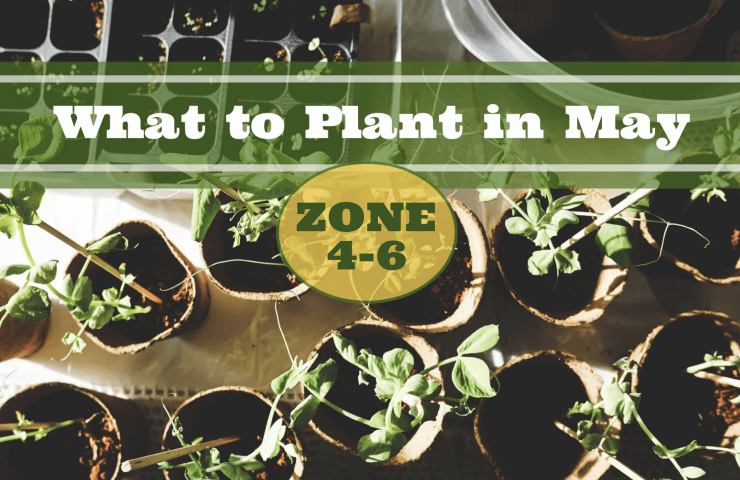
In USDA zones 4-6, May isn’t just about what to plant – it’s about what not to plant too early, because one late frost can send your garden dreams back to the drawing board faster than you can say “I should have waited until Memorial Day!”
Let’s face it – if you live in these northern zones, you’ve probably been itching to get your hands dirty since February, peering longingly at seed catalogs while snow piled up outside your window. But patience pays off in gardening, especially when Mother Nature likes to throw curveball frosts well into spring.
The Magic Date: Last Frost Predictions
Before we dive into what to plant, let’s talk about that all-important date – the average last frost. In these zones, it varies significantly:
- Zone 4: May 15-June 1
- Zone 5: April 15-May 15
- Zone 6: April 1-May 1
But remember, these are just averages – that sneaky frost can appear later, which is why Memorial Day weekend has become the traditional safe planting date for many gardeners in zones 5 and 6. Zone 4 folks might want to wait even longer or keep those frost cloths handy!
Until now, you’ve likely been limited to cold-hardy vegetables like peas, spinach, and radishes. But May opens up a whole new world of planting possibilities. Let’s explore what can go into your garden this month, organized by when to plant them relative to your last frost date.
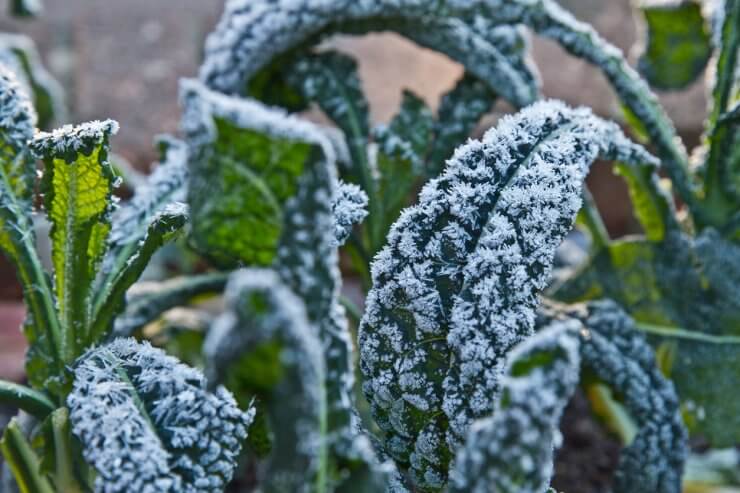
What to Plant 2-3 Weeks Before Last Frost
Cold-Hardy Vegetables
Kale (Direct sow or transplants, 2-3 weeks before last frost) This nutrient powerhouse thrives in cooler temperatures and actually gets sweeter after a light frost. Plant seedlings 12-18 inches apart in rich, well-draining soil. Varieties like ‘Lacinato’ and ‘Red Russian’ offer distinctive flavors and impressive cold tolerance.
Spinach (Direct sow, 2-3 weeks before last frost) Perfect time for a second round of this quick-growing green that prefers cool weather. Sow seeds ½ inch deep and 2-3 inches apart, then thin to 4-6 inches. Baby leaves can be harvested in just 3-4 weeks, with full-sized leaves ready in 6-8 weeks.
Lettuce (Direct sow or transplants, 2-3 weeks before last frost) May is prime time for lettuce before summer heat causes it to bolt. Try heat-resistant varieties like ‘Buttercrunch’ or ‘Red Sails’ for longer harvests. Sow seeds ¼ inch deep and thin to 8-12 inches apart depending on variety.
Radishes (Direct sow, 2-3 weeks before last frost) These speedy growers mature in just 3-4 weeks, making them perfect for succession planting. Sow seeds ½ inch deep and 1 inch apart, thinning to 2 inches. Harvest when roots are 1-inch diameter for best flavor before they become woody and spicy.
Beets (Direct sow, 2-3 weeks before last frost) Both their ruby roots and nutritious greens are edible, giving you two harvests in one. Sow seeds ½ inch deep and 1 inch apart, thinning to 3-4 inches. Each “seed” is actually a cluster that will produce multiple plants, so careful thinning is essential for good root development.
Carrots (Direct sow, 2-3 weeks before last frost) May-sown carrots often taste sweeter than early spring plantings. Sow seeds ¼ inch deep in loose, stone-free soil for straight roots. Thin to 2-3 inches apart once seedlings are established. Keep soil consistently moist until germination, which can take 1-3 weeks.
Swiss Chard (Direct sow or transplants, 2-3 weeks before last frost) The colorful stems of varieties like ‘Bright Lights’ add visual punch to gardens and plates alike. Plant seeds ½ inch deep and 2 inches apart, thinning to 6-12 inches. This cut-and-come-again vegetable will produce all season with proper harvesting.
Peas (Direct sow, 2-3 weeks before last frost) May is your last chance for peas before summer heat arrives. Choose quick-maturing varieties like ‘Sugar Ann’ snap peas. Plant seeds 1 inch deep and 2 inches apart, providing support for climbing varieties. Harvest frequently to encourage continued production.
Broccoli (Transplants, 2-3 weeks before last frost) Transplant seedlings 18 inches apart for an early summer harvest. ‘Green Magic’ and ‘Packman’ mature quickly and produce tasty side shoots after the main head is harvested. Provide consistent moisture and watch for cabbage worms.
Cabbage (Transplants, 2-3 weeks before last frost) Early varieties like ‘Early Jersey Wakefield’ can be transplanted now for summer harvests. Space plants 12-18 inches apart depending on head size. Apply mulch to maintain soil moisture and suppress weeds, as cabbage has relatively shallow roots.
Onions (Sets or transplants, 2-3 weeks before last frost) Sets or transplants establish quickly in May’s mild conditions. Plant with just the top inch showing above soil level, spacing 4-6 inches apart. Keep well-watered for the first few weeks until established. Harvest when tops fall over and begin to brown.
Potatoes (Seed potatoes, 2-3 weeks before last frost) If you haven’t planted them yet, early May is your last best opportunity. Plant seed potatoes 4-6 inches deep and 12 inches apart. As plants grow, mound soil around stems (“hilling”) to increase yield and prevent greening of developing tubers.
Herbs
Cilantro (Direct sow, 2-3 weeks before last frost) Best planted early in the month before summer heat causes it to bolt. Sow seeds ¼ inch deep and 6-8 inches apart. For a continuous supply, plant new seeds every 2-3 weeks until early summer, then resume in fall when temperatures cool again.
Dill (Direct sow, 2-3 weeks before last frost) Direct sow every few weeks for a continuous supply of this fragrant herb. Plant seeds ¼ inch deep and thin to 8-12 inches apart. Allow some plants to flower and set seed for both culinary use and to attract beneficial insects like swallowtail butterflies.
Parsley (Transplants or direct sow, 2-3 weeks before last frost) This biennial herb will provide leaves all season and into next year. Seeds are slow to germinate (2-3 weeks), so transplants may be preferred. Space plants 6-8 inches apart in rich, moist soil. Both flat-leaf and curly varieties offer excellent flavor.
Chives (Transplants, 2-3 weeks before last frost) Perennial that offers beautiful purple flowers along with tasty leaves. Plant divisions or starter plants 8-12 inches apart. Leave flowers on to attract pollinators or snip them for colorful, onion-flavored garnishes. Will return year after year with minimal care.
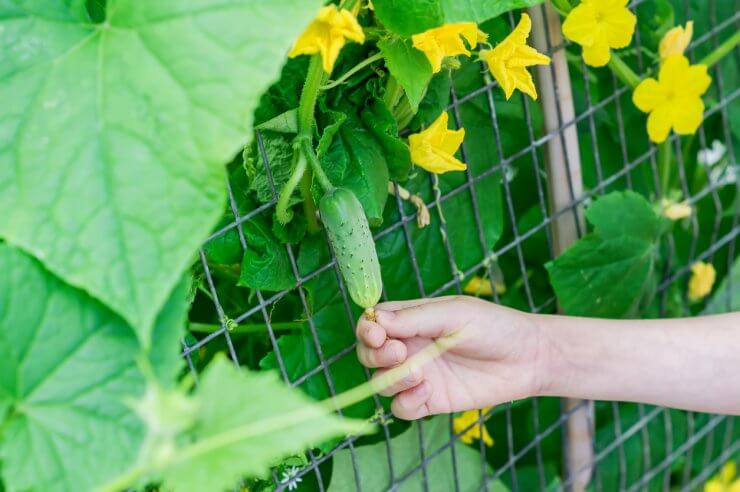
What to Plant Around Last Frost Date (0-1 Weeks Before)
Beans (Bush) (Direct sow, 0-1 weeks before last frost) These nitrogen-fixing plants grow quickly once soil warms. Sow seeds 1 inch deep and 2-4 inches apart. Varieties like ‘Provider’ and ‘Blue Lake’ are reliable producers even in cooler conditions. Keep soil consistently moist until germination, which typically takes 8-10 days.
Summer Squash (Direct sow or transplants, 0-1 weeks before last frost) Start seeds indoors or wait until just after frost to direct sow. Space plants 24-36 inches apart to allow for good air circulation. Harvest fruits when small (6-8 inches for zucchini) for the best flavor and to encourage continued production throughout summer.
Cucumbers (Direct sow or transplants, 0-1 weeks before last frost) These warmth-lovers can be started indoors and transplanted at frost date. Plant bush varieties 12-18 inches apart or vining types 24-36 inches apart with trellising. Consistent moisture is crucial for sweet, non-bitter fruits. Harvest frequently once production begins.
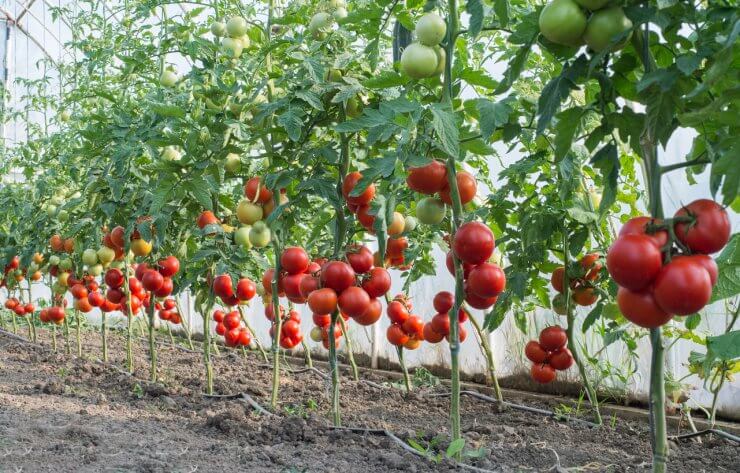
What to Plant After Last Frost (1-2 Weeks After)
Warm-Season Vegetables
Tomatoes (Transplants, 1-2 weeks after last frost) The garden favorite needs consistently warm temperatures to thrive. Plant seedlings deeper than they were growing in pots, burying part of the stem which will develop additional roots. Space determinate varieties 24 inches apart and indeterminate types 36 inches apart with sturdy supports.
Peppers (Transplants, 1-2 weeks after last frost) Bell peppers, jalapeños, and all their spicy cousins love May’s warming temperatures. Plant seedlings 18-24 inches apart and consider providing afternoon shade if your area tends to heat up quickly. Pinch off early flowers to encourage stronger plants before fruit production begins.
Eggplant (Transplants, 1-2 weeks after last frost) These heat-lovers will sulk if planted too early. Space plants 18-24 inches apart in your sunniest spot. Black plastic mulch can help warm soil and increase productivity. Staking may be necessary as plants become heavy with fruit. Harvest when skin is glossy for best flavor.
Beans (Pole) (Direct sow, 1-2 weeks after last frost) Direct sow when soil temperatures reach at least 60°F. Plant seeds 1 inch deep and 3-4 inches apart along a trellis, pole, or other support structure. Varieties like ‘Kentucky Wonder’ and ‘Rattlesnake’ offer prolific harvests and excellent flavor. Provide sturdy support at least 6 feet tall.
Corn (Direct sow, 1-2 weeks after last frost) Plant in blocks of at least 4 rows rather than single rows for better pollination. Sow seeds 1-2 inches deep and 8-12 inches apart in rows 30-36 inches apart. Consider succession planting every 2 weeks for an extended harvest. Choose varieties suited to your zone’s growing season length.
Winter Squash (Direct sow or transplants, 1-2 weeks after last frost) These need a long season, so don’t delay planting once frost danger has passed. Space plants 3-4 feet apart, allowing even more room for vigorous varieties like Hubbard. Harvest when rind is hard and cannot be pierced with a fingernail. Cure in the sun for 7-10 days for best storage.
Pumpkins (Direct sow or transplants, 1-2 weeks after last frost) Like winter squash, pumpkins need a long, warm growing season. Plant seeds 1 inch deep in hills spaced 4-6 feet apart. For carving pumpkins, choose varieties like ‘Jack-o-Lantern’; for cooking, try smaller ‘Sugar Pie’ types. Place a board under developing fruits to prevent rot.
Melons (Direct sow or transplants, 1-2 weeks after last frost) Both watermelons and cantaloupes need consistently warm conditions and 70-90 days to mature. Space plants 24-36 inches apart in the warmest spot in your garden. Black plastic mulch helps warm soil and speeds development. Harvest when stem begins to crack for cantaloupes or when underside turns yellow for watermelons.
Herbs
Basil (Transplants, 1-2 weeks after last frost) This heat-lover pairs perfectly with your tomatoes, both in the garden and on the plate. Plant seedlings 12-18 inches apart after all danger of frost has passed. Pinch growing tips regularly to encourage bushy growth and delay flowering, which diminishes flavor. Pick leaves frequently to stimulate new growth.
Rosemary (Transplants, 1-2 weeks after last frost) In zones 5-6, this can be perennial with protection; treat as annual in zone 4. Plant in well-draining soil in a sunny location. Consider container growing to bring indoors for winter in colder zones. Harvest sprigs throughout the growing season, but never remove more than one-third of the plant at once.
Thyme (Transplants, 1-2 weeks after last frost) Drought-tolerant perennial that adds flavor to many dishes. Space plants 12-18 inches apart in well-draining soil. Both culinary and ornamental varieties make attractive, low-maintenance additions to beds and containers. Regular harvesting promotes dense, bushy growth.
Oregano (Transplants, 1-2 weeks after last frost) Perennial herb that becomes more flavorful as the season progresses. Plant in full sun with well-draining soil 12-18 inches apart. Harvest just before flowering for strongest flavor. Greek oregano offers the most intense flavor for Mediterranean cooking. Cut back after flowering to encourage fresh growth.
Sage (Transplants, 1-2 weeks after last frost) Beautiful gray-green leaves add texture to your herb garden. Space plants 18-24 inches apart in full sun. This drought-tolerant perennial provides years of harvests in zones 5-6; may need winter protection in zone 4. Prune in spring to maintain shape and encourage new growth.
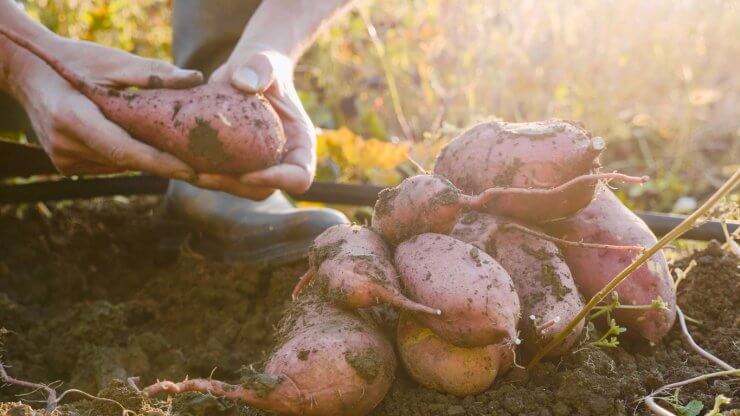
What to Plant 2-3 Weeks After Last Frost
Sweet Potatoes (Slips, 2-3 weeks after last frost) These tropical plants need consistently warm soil to thrive. Plant slips 12-18 inches apart in loose, well-draining soil. Create raised ridges or hills for better drainage. Wait until nights are reliably above 55°F before planting. Harvest in fall before first frost when leaves begin to yellow.
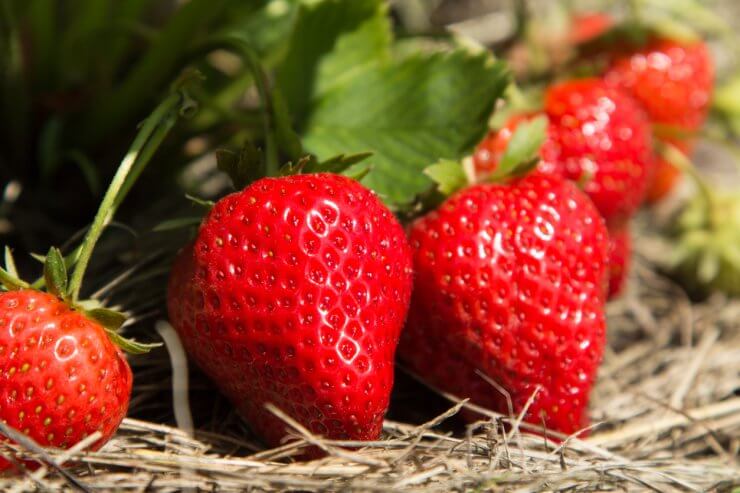
Berries to Plant in May
May is also an excellent time to establish fruit plants for future harvests:
Strawberries (Transplants, early May) Plant as soon as soil can be worked for a harvest next year. Space plants 12-18 inches apart with crowns at soil level. June-bearing varieties produce one large crop while ever-bearing types produce throughout the season. Remove flowers the first year on newly planted June-bearing types to encourage strong root development.
Raspberries (Transplants, early May) Plant early in May for best establishment. Space plants 2-3 feet apart in rows 6-8 feet apart. Summer-bearing varieties produce on second-year canes while ever-bearing types fruit on first-year growth. Regular pruning is essential for good production and disease prevention.
Blueberries (Transplants, early May) Ensure you have acidic soil (pH 4.5-5.5) before planting these antioxidant powerhouses. Space plants 4-6 feet apart. Plant at least two different varieties for cross-pollination and better yields. Remove flowers the first year to encourage strong root and vegetative growth.
Tips for May Planting Success
- Harden off transplants: Gradually acclimate indoor-started seedlings to outdoor conditions by exposing them to increasing amounts of sunlight and outdoor temperatures over 7-10 days.
- Keep frost protection handy: Even after your “average” last frost date, keep row covers, cloches, or old bed sheets available to protect tender plants from late cold snaps.
- Employ succession planting: Sow quick-growing crops like radishes, lettuce, and spinach every 1-2 weeks for continuous harvests.
- Mulch after planting: Once soil has warmed, apply a 2-3 inch layer of organic mulch to retain moisture, suppress weeds, and regulate soil temperature.
- Water deeply and consistently: Newly planted seeds and transplants need reliable moisture to establish well.
- Consider microclimates: Your yard may have areas that warm earlier or stay cooler longer. Use these natural variations to your advantage when placing plants.
- Support early plantings: Install trellises, stakes, and cages now while plants are small – it’s much harder once they’re actively growing.
May truly marks the transition from early spring’s limited options to the full glory of the growing season. With careful planning around your last frost date, you’ll set yourself up for a bountiful garden that will reward you with fresh, homegrown goodness all summer long.
What are you most excited to plant this May? No matter what you choose, there’s nothing quite like the satisfaction of seeing those first seedlings emerge from the soil after winter’s long reign. Happy planting!


 Previous
Previous


What about blackberries
Yes blackberries are another good plant for May!